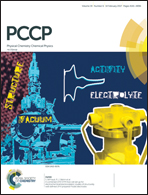Electrochemical-reaction-induced synaptic plasticity in MoOx-based solid state electrochemical cells
Abstract
Solid state electrochemical cells with synaptic functions have important applications in building smart-terminal networks. Here, the essential synaptic functions including potentiation and depression of synaptic weight, transition from short- to long-term plasticity, spike-rate-dependent plasticity, and spike-timing-dependent plasticity behavior were successfully realized in an Ag/MoOx/fluorine-doped tin oxide (FTO) cell with continual resistance switching. The synaptic plasticity underlying these functions was controlled by tuning the excitatory post-synaptic current (EPSC) decay, which is determined by the applied voltage pulse number, width, frequency, and intervals between the pre- and post-spikes. The physical mechanism of the artificial synapse operation is attributed to the interfacial electrochemical reaction processes of the MoOx films with the adsorbed water, where protons generated by water decomposition under an electric field diffused into the MoOx films and intercalated into the lattice, leading to the short- and long-term retention of cell resistance, respectively. These results indicate the possibility of achieving advanced artificial synapses with solid state electrochemical cells and will contribute to the development of smart-terminal networking systems.


 Please wait while we load your content...
Please wait while we load your content...